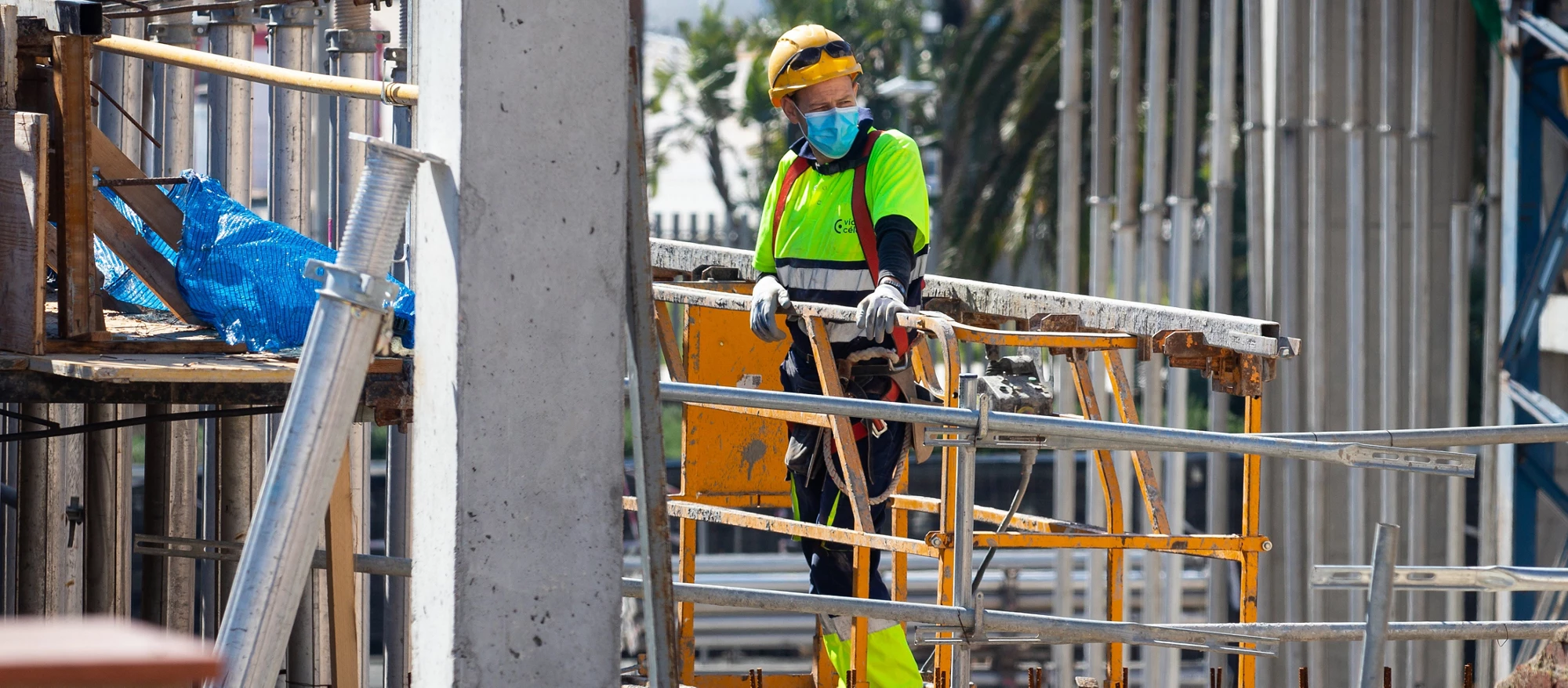 En avril 2020, un ouvrier du bâtiment à Barcelone (Espagne) a repris le travail et porte un masque de protection contre le coronavirus. Photo : © Daniel Ferrer Paez/Shutterstock
En avril 2020, un ouvrier du bâtiment à Barcelone (Espagne) a repris le travail et porte un masque de protection contre le coronavirus. Photo : © Daniel Ferrer Paez/Shutterstock
After several weeks of lockdowns and strict social distancing, some countries are starting to open for business. This process, however, is bound to be slow, and may even see measures reintroduced if infections rise again. The gradual lifting of containment measures in countries like New Zealand, Austria, France, Germany, and others will likely shape how other countries respond when they reach a similar stage of the coronavirus pandemic (COVID-19).
This relaxation of lockdowns and other crisis measures does not mark a return to business as usual, but rather the transition to a “new normal.” This is a first stage toward recovery. With variations likely across contexts, economic activity will gradually return but will still be far different for workers and firms. After all, the impacts of rising unemployment and underemployment will not disappear, and labor market conditions may worsen further as emergency measures are phased out. Global working hours shrank by 4.5 percent in the first quarter of 2020 compared to the last quarter of 2019 per ILO estimates. Worldwide, three quarters of informal workers are estimated to be severely impacted by lockdowns or are working in the hardest hit sectors. What can governments do to help workers transition to this new normal?
This relaxation of lockdowns and other crisis measures does not mark a return to business as usual, but rather the transition to a “new normal.”
Governments need to continue implementing strong actions to support workers. Three pillars can help set the stage for labor market recovery:
First, prepare an exit strategy from current emergency measures.
Countries around the world have responded strongly to the crisis, often setting up record-setting support packages for firms and workers aimed at sustaining livelihoods, saving jobs, and preserving the production capacity of firms. But these measures, given their nature and the fiscal cost, need to be time-bound. When countries reach the first stage of recovery, it is time to think about retiring or adapting these measures as necessary. For support to firms, this means paying more attention to viability and supporting innovation and investments to adapt to a new reality of doing business. For workers, wage subsidies aimed at preserving employment can gradually shift toward promoting employment, complemented by measures that support employment of vulnerable groups. Worker protections need to expand to cover more workers, and work safety conditions require upgrading for the return to work. This exit strategy will need to be differentiated by sectors, as some may recover faster, while uncertainty, physical distancing, and mobility restrictions will remain more binding in some activities than others.
Second, get the timing right for tailored support to workers.
Timing is key. From previous crises (see here, here and here), we have learned that workers who start looking for a job during a recession experience significant negative impacts on employment and income compared to those with better timing. Recent graduates, first-time job seekers, and workers who have lost jobs form the core of what could be called the “COVID-19 Generation.” They should be the main target of policies to avoid long-term impacts. The longer they are out of work or underemployed, the more difficult it will be to reverse the impacts of the crisis. Since scarring effects tend to be particularly pervasive among low-skilled and more vulnerable workers, further focus on their needs is critical. Traditional wage subsidies that support new hiring are an important tool; so are complementary measures that support employability, including technical and socio-emotional skills training aimed at reskilling or upskilling workers, as well as intermediation services to facilitate job transitions. Technology can boost the implementation of these labor market programs. It can help minimize physical contact but also make them more targeted and cost-effective.
Third, stimulate overall labor demand and livelihoods.
Even as businesses reopen, local and international value chains may have fractured, with many countries in a recession already or soon to be. This causes a potentially vicious circle that will depress labor demand for longer, even after the health emergency eases. Hence, stimulating labor demand through the tax system and government spending — including social assistance programs — will be critical. Particularly for informal workers and household enterprises in developing countries, social assistance programs should continue to help sustain livelihoods. They can be phased out at a slower pace than other COVID-19 emergency measures. Public works, including innovative digital public works, are further important policy instruments that can help stimulate labor demand toward the eventual recovery.
Until, then: Stay tuned for more on jobs policies for the transition to the new normal.



Join the Conversation